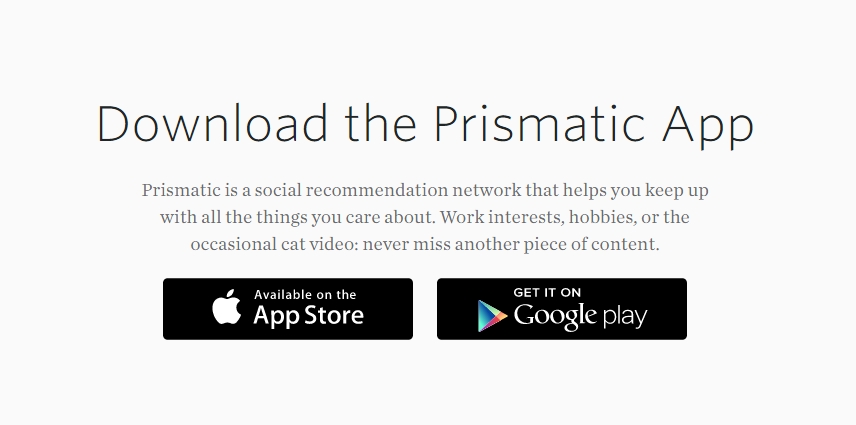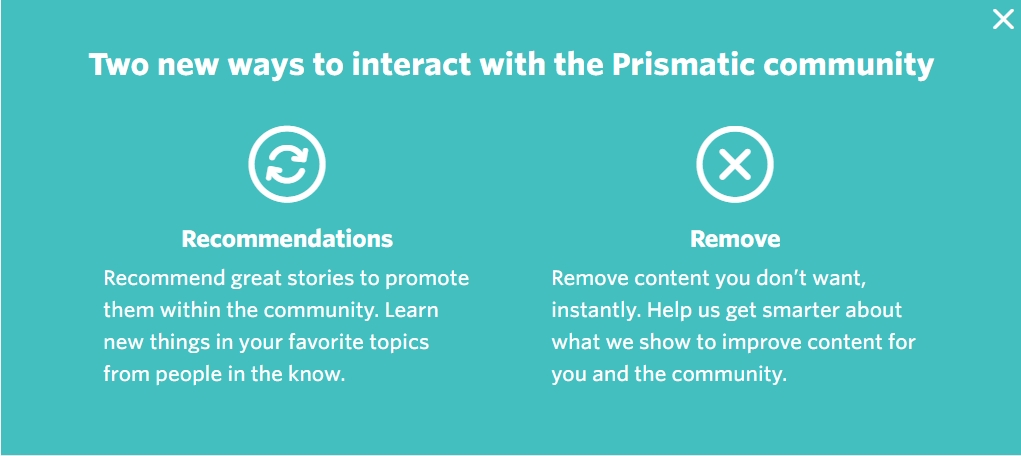The DiRT on Prismatic
Good afternoon, gentle reader.
In today’s edition of What Are You Studying?* we have a product review. Gone are the days when, as a travel blogger, I would be paid to review products and services. No, today it’s all about expanding one’s horizons and participating in the larger digital humanities community.
*In my mind, I am living a version of The Truman Show – everything that happens is entertainment!
With that in mind, I’d like to introduce you to DiRT. That is, Digital Research Tools, a website that aggregates information for digital humanities researchers. It’s crowd-sourced, so is by no means a comprehensive listing. It is still a nice resource.
My assignment, which will undoubtedly self-destruct the moment you finish reading it, is to write a review of a product suitable for addition to DiRT. And, if the tool is not already listed, add it to such. Since Prismatic was not listed prior to my meddling interference, I got to do just that. …hmm. I need to find better ways to be evil.
To arms! or What is Prismatic?
I hope plagiarising from oneself is acceptable, because I’m going to quote my DiRT listing. Prismatic is a “...content curation and topic discovery website based primarily on publishers the user follows through social media. Upon signing up, users are asked to select a number of topics that fall within their fields of interest.” Essentially, you tell it what you like, and it shows you links to articles and videos that it (the site algorithm, that is) calculates you will enjoy. The website, AllThingsD, refers to it as a “personal interest graph.”
Like Facebook, content is displayed in a vertical feed format. The big difference, however, is that your interests – not your friends’ interests, not Facebook’s interests (or its creepy, and possibly illegal, mood manipulating experiments), not the interests of advertisers – and your behaviour drive the content choices. You have the option to recommend, comment, share, remove the content, or save it. The site’s algorithm “learns” from those choices which topics and publishers are of most interest to you.
There is a degree of weighing against popularity as defined by the rest of the Internet-going mob. Social signals such as ‘likes’, trending hashtags, and shares from other sites are taken into account to a degree. The message from the developers, however, seems to be that the user preferences come first. Aria Haghighi, one of the founders, described it as such:
Prismatic begins learning about your interests before you use the product. Within seconds of signing up, we’ve analyzed what you and your network share and discuss, and we make initial guesses about how much you like topics like “Science Fiction”, publishers like “io9”, or how interested you are in things that individual people share (even those outside your network).
The support section, which also contains the introduction and FAQ, of the website links to prismatic.desk.com. Getting there as a first-time vistor to the site doesn’t seem possible. The section only becomes available after signing up and logging in. As the landing screen is vague and bland, rather than intriguing in its sparsity, this is a downfall. The words at the top of the landing page on getprismatic.com are simply, “Learn interesting things every day”. Since people do that on Facebook, Twitter, Wikipedia, Pinterest, Reddit, and a number of other sites already, unless one is just that curious, you may not get much further. This is especially true if you scroll down to the next section. It is daringly titled, “Download the Prismatic App”. Truly avant garde, peeps. Edgy. But seriously, you’ve got to sell me on what you’re providing before I’m going to grant you all kinds of crazy permissions on my phone*. Really, now – what’s in it for me?
*To be fair, the Android app only asked for identity permission.
In a rather non-pithy response to the question of what is in it for the user, CEO Bradford Cross says:
You should go on Prismatic because you’re going to find stuff on all your hobbies, not just the one spectrum of yourself you share on Facebook and Twitter. You end up having one slice of your persona per network, and this is the whole you.
I must disagree. My interests on Facebook are pretty transparent. I long ago stopped separating my friends strictly by affiliation (friends, work colleagues, family, etc.) and now self-filter using lists and trust levels. Sometimes I try to differentiate between how much of my political rantings and ravings a particular person seems likely to put up with before unfriending me. But that’s about sharing habits, not reading. Perhaps a better angle for Mr. Cross’s answer would be to address the dynamics of discovery and dissemination.
There are academic papers that mention Prismatic, though most are based around the number-crunching, computer side of things. Improving Digital Reading Experiences With Mood-Based Content Selection (W. Verahavert, J. Vanattenhoven, and D. De Grooff, 2013) gives it a passing mention, but only as one of a number of content-aggregation services. A small number of publications mention Prismatic in terms of content curation, taxonomy, and social media in general. The more interesting information, for the purpose of this review, seem to come from tech and startup sites from around the time of the product’s launch in 2012.
The future of Prismatic is not clear, despite the fact that there appear to be job openings for which the company is hiring. After the initial buzz, things seem to have quieted considerably. The company blog seems to get updated a couple of times each month, though there is nothing from January of 2015. The Twitter account has only one tweet for the month. The Android app was updated in the middle of the month. It would seem that things are ticking just fine behind the scenes, but public-facing media is a little subdued.
Wikipedia states that “Prismatic has open-sourced a large part of its technology stack on GitHub,” where there are about 10 members making infrequent but regular contributions. Exporting one’s data isn’t an option. This is only really a problem if a user would like to export their saves, maybe as bookmarks. The site and the mobile apps share information, and sharing buttons for content is built-in, so perhaps that covers it for most users.
The site seems stable enough and it does indeed do what it says. Immediately after creating my account, I found a number of articles that grabbed my interest. Even with my rampant consumption of online media through Facebook, Twitter, Google Alerts, and other services, Prismatic did find several things I hadn’t seen elsewhere. I do love to learn and read, often spending hours exploring the rabbit warrens of trending news, social media, and wikis. (Even if I wasn’t a PC gamer, I’d need a computer with robust stats simply because of the number of tabs I tend to keep open on my browsers.)
There are a few things that would make Prismatic a happier place for me as a user. One being the ability to set up channels for different subjects. It’s possible to go to the “Interests” section and click on topics, but being able to more easily bookmark content and place it into collections would be fantastic. And as mentioned previously, having support sections more accessible throughout the site – including when one is not logged in – would be not only handy, but simple common sense.
Finally, there is at least one bug I’ve noticed in my short time using the site. Often a topic will be posted wherein the headline links to one article, but an accompanying video will be about something else entirely. They both tend to fall broadly within the category they represent, but are not related to each other.
In terms of my research topics – diversity and inclusion in media production, particularly film and video games – Prismatic is another tool in the box when it comes to discovering content. It’s not the be-all, end-all, and certainly the visuals are not overly engaging. It does, however, do what it claims and manages to find interesting, engaging content that can occupy an inquiring mind for hours at a stretch. As long as the site keeps serving up fascinating, entertaining fare, I will continue to use it in addition to my other sources. And while I am pleased that the back end functionality seems to be the priority, I look forward to the day when the interface gets a nice, shiny, new coat of paint.
PS: Let’s not forget what started this review. Here’s Prismatic on DiRT.






